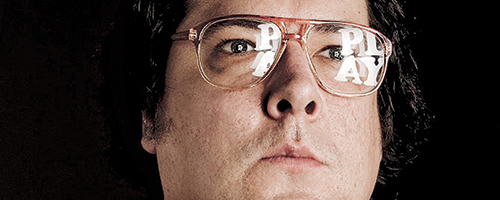A funny thing happened to me in Tokyo last summer. While perusing one of the many multi-level arcades found all over the city, I noticed a single Street Fighter IV arcade cabinet obscured by a small gathering of people.
Taking it, once again, to the streets
A funny thing happened to me in Tokyo last summer. While perusing one of the many multi-level arcades found all over the city, I noticed a single Street Fighter IV arcade cabinet obscured by a small gathering of people.
“That’s odd,” I thought to myself. “I didn’t realize SF IV was out yet.”
I didn’t think it was common practice, even in Japan, to see arcade games out and playable months before their release date, but I didn’t feel like waiting, so I left.
Over the next few weeks ads for the game began going up all over the city, announcing it would be out in arcades mid-July, but by that point I had fallen into the mindset that after a solid 10 years since a true sequel, SF IV either wasn’t real or wouldn’t be any good.
My point is, now that the game has finally hit consoles stateside, I can assure you that it is real (obviously) and having played it at length, I can say without doubt that it’s a game worthy of the series’ legacy, even after a 10-year hiatus.
After the ridiculous technicalities of 1999’s Street Fighter III (although I would argue that the last “true” Street Fighter was Street Fighter Alpha 3 the previous year) SF IV plays and feels like a return to the greatness and simplicity of Street Fighter II, but with enough technical weight, reversals and cancels to satisfy even the most die-hard fan.
The general idea is that Capcom wanted to make the game accessible to both series veterans and newcomers, and they’ve done just that.
What this means is that you can muddle your way through a match using just regular and special attacks, or you can play around with some of the new gauge systems the game has to entice more experienced players, most notable the “focus” system.
Ostensibly, the focus attack is an easily executable charge-up move that becomes an unblockable attack, capable of knocking down your opponent at full strength. But focus also acts as a temporary shield of sorts—it will absorb damage taken from one hit, but the damage will recover over time.
Needless to say, with the proper skills, focus can become a boon to just about anyone, adding a layer of strategy heretofore unseen in the Street Fighter canon.
The other big change is the introduction of “cancels,” which effectively stop a move halfway through and allow you to either rush in for a second attack or dash out to escape an opponent’s retribution. So, Ryu can deliver half of a two-hit heavy punch, say, then cancel out and perform his trademark fireball, the Hadoken.
Alternately, if the enemy blocks a move that would leave you vulnerable, like a Shyroruken upper cut, it’s now possible to cancel out of it and double tap away to escape from the inevitable counter attack.
Although this may seem simple, much like the addition of the focus system, canceling adds a lot more technicalities to the game. The brilliant thing is (for the most part) if you’re not worried about the intricacies of these two systems, you can adopt a more classic approach, and with a little practice, learn to avoid them.
Aside from cancels and focus attacks, SF IV has your now standard super gauge, which builds the more damage you give, allowing you to unleash super combos, as well as the “revenge” gauge, which builds the more damage you take.
Since the “ultra” attacks you can pull off with a full revenge gauge are even more devastating than normal super combos, they can change the outcome of a match in a single move, but it also means an experienced player will have to be vigilant in using SF IV‘s other strategic maneuverings to outwit an opponent about to an unleash an ultra attack.
What this all adds up to then, is that the game is a great mix of old and new. Although SF IV uses 3D models, it’s actually on a 2D plane (which in this day and age is a minor miracle in and of itself).
The cast has all your classic characters, from Ryu to Cammy to M. Bison, as well as some returning favorites from Alpha series (read: Akuma) as well as some new fighters to round out the set, all stylized with a slick new look.
Thus Capcom seems to be moving toward ushering in a new generation of Street Fighter fans, keeping the old-school sensibilities and feel of SF II with a toss-up of Alpha-era combos and some of the deep game play of SF III.
Whether you’re playing solo, online or with friends (the way the game was meant to be played) SF is undeniably well made and just plain fun. And that’s not something I usually say about fighting games.
Executing moves seems slightly more forgiving than in past iterations, and the fighting is taut, solid and carries real weight. There’s even a challenge mode for those that want to hone their skills (although it’s nowhere near as robust as the RPG-lite World Tour mode from Street Fighter Alpha 3) and a metric ton of unlockables.
The few complaints I have are pretty minor: Unlike a lot of past SF games, the stages in this one seem pretty bland and alternate costumes, which would have come standard in years past, are now sold as downloadable content at $3.99 per pack.
Lastly, Seth, the final boss, is one of the cheapest son-of-a-bitches ever to come out of a Capcom game, ever. And this is the company that made Mega Man 9, for Christ’s sake.
Other than that, SF IV is about as near to fighting game perfection as we’re likely to see in a long time, or at least until the inevitable sequel. Now, where’s that barrel-breaking bonus game?





